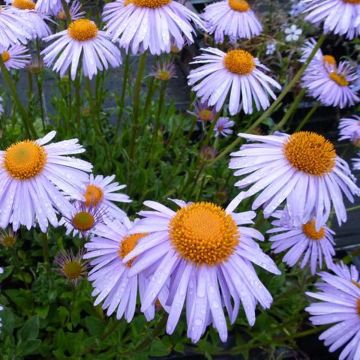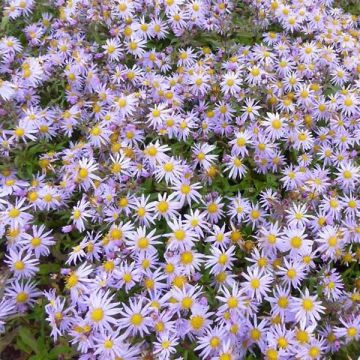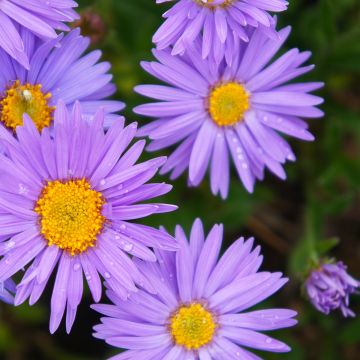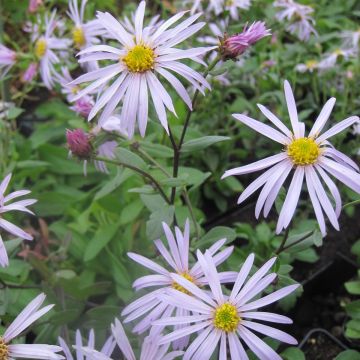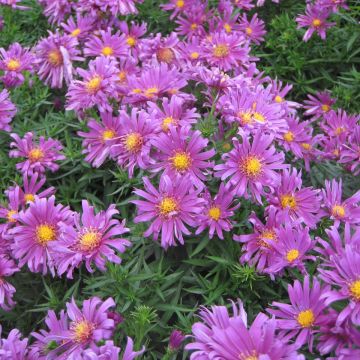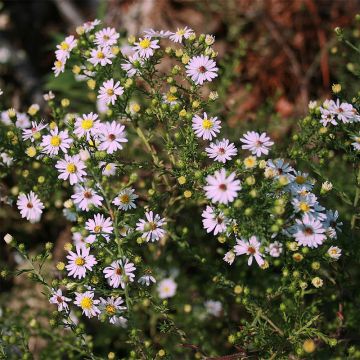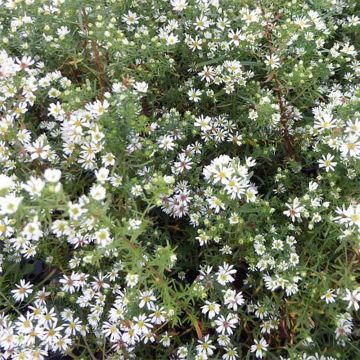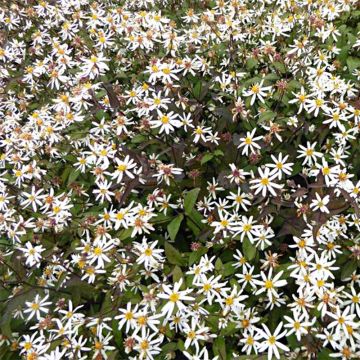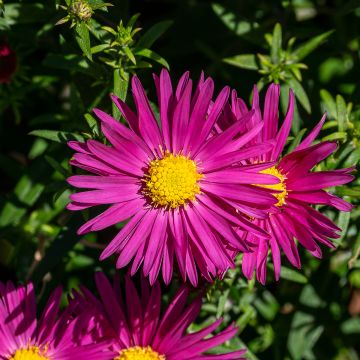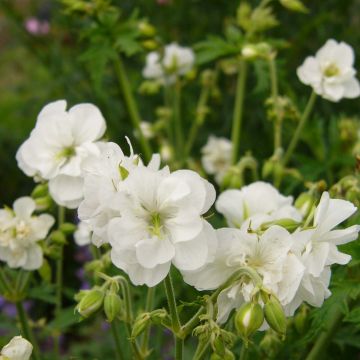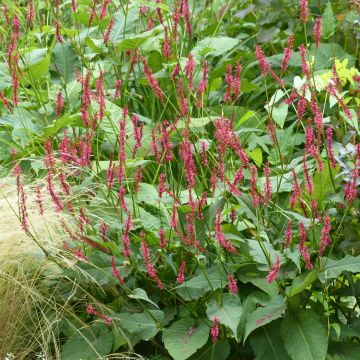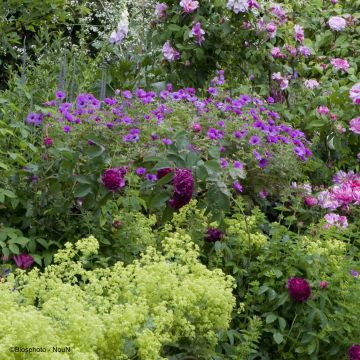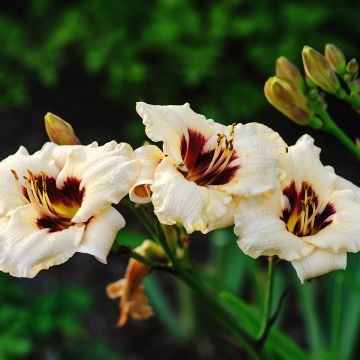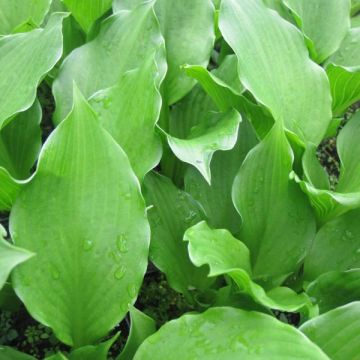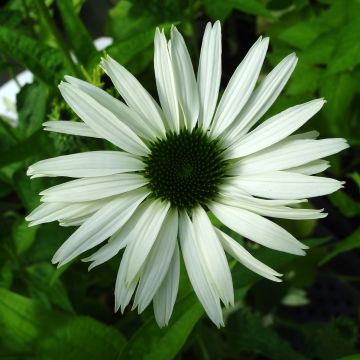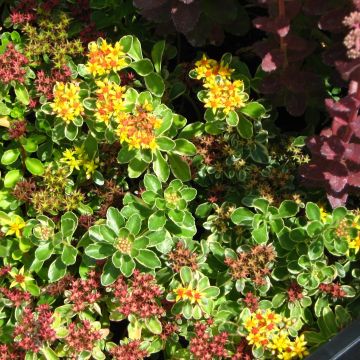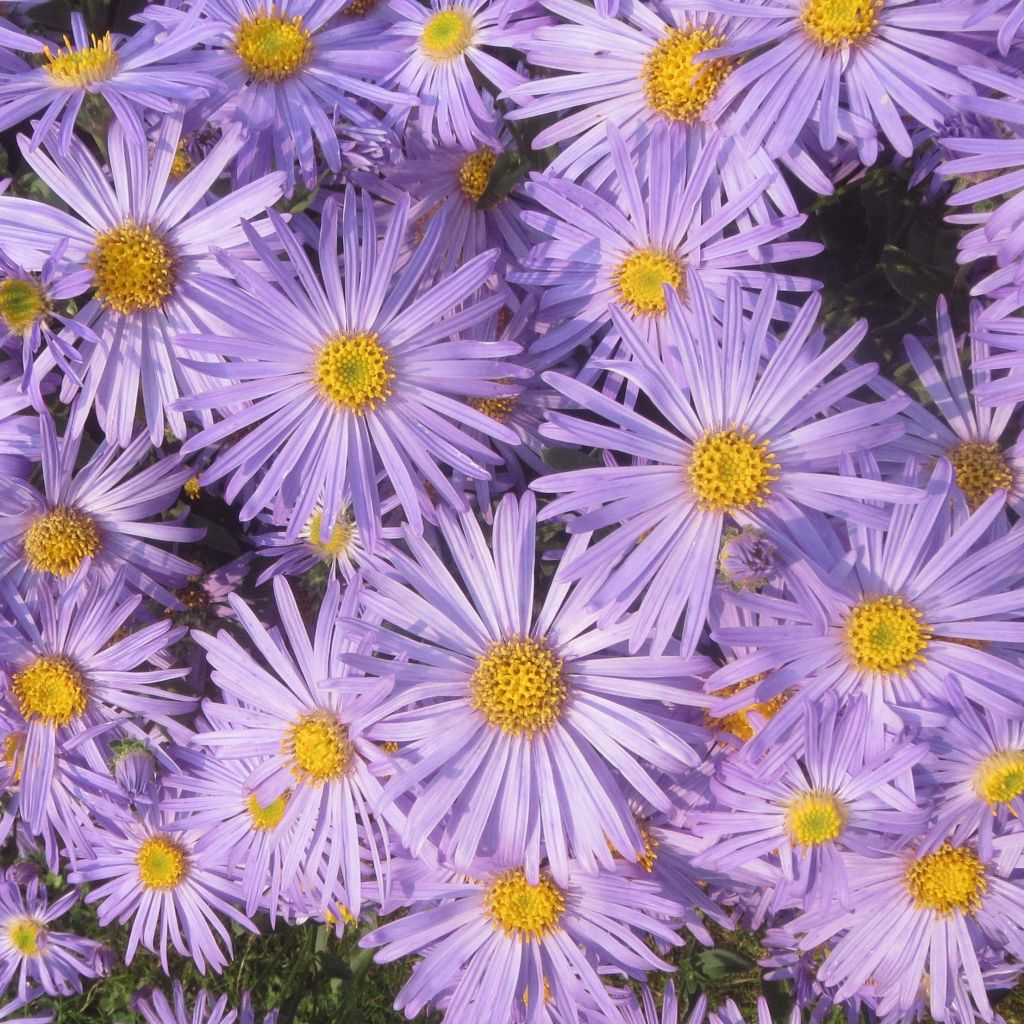

Aster amellus Blue King
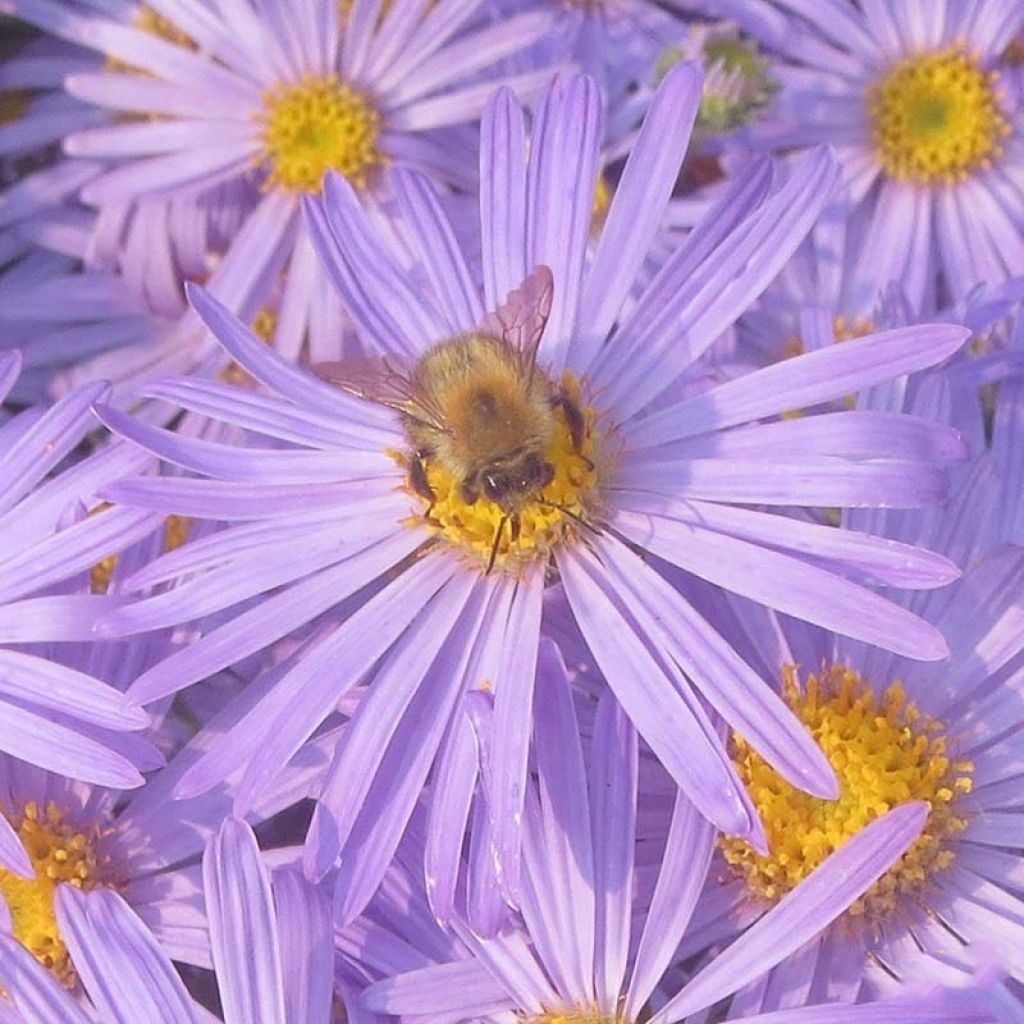

Aster amellus Blue King
Aster amellus Blue King
Aster amellus Blue King
Italian Aster, European Michaelmas Daisy
This item cannot be shipped to the selected country
Delivery charge from €5.90
More information
Schedule delivery date,
and select date in basket
This plant carries a 12 months recovery warranty
More information
We guarantee the quality of our plants for a full growing cycle, and will replace at our expense any plant that fails to recover under normal climatic and planting conditions.
From €5.90 for pickup delivery and €6.90 for home delivery
Express home delivery from €8.90.
Does this plant fit my garden?
Set up your Plantfit profile →
Description
Aster amellus 'Blue King' is a variety of summer aster with large-sized flower heads for the species. The flowers are a beautiful deep lavender-blue. This intermediate-sized plant blooms abundantly in the second half of summer. This aster tolerates poor, chalky soil, as long as it remains moist. It enhances and enlivens flower beds during a sometimes colourless period of the year, bridging the gap between summer blooms and autumn colours. It is not very sensitive to wind.
Amellus aster belongs to the Asteraceae family. It is native to Eastern Europe and Turkey, where it grows in hilly and mountainous areas, in warm and dry habitats, in meadows, in clearings, at the edge of forests, on slopes, and along paths.
'Blue King', obtained in 1954 in Great Britain, is one of its many cultivars. This perennial shows a clump-like, upright habit with few branches from spring onwards. It reaches a height of 50cm (20in) when in bloom, and spreads over 45cm (18in), with fairly rapid growth. The generous flowering takes place in August-September. The inflorescence is a head with peripheral, ligulate flowers of a bright blue-violet colour. The central flowers (the heart) are yellow-orange. The heads measure around 4cm (2in) in diameter, grouped in a short corymb, numbering 2 to 6. This aster is a deciduous perennial with slightly hairy stems, whose above-ground vegetation dries up and dies in late autumn. The basal leaves are slightly pubescent, rough on both sides, generally entire, oblong, lanceolate, and medium green. The cauline leaves are sessile, meaning they have no petiole and are directly attached to the stem. This plant spreads laterally through woody underground rhizomes, without becoming invasive.
It is impossible to imagine our gardens without asters. Not demanding, they blend very well with all other flower bed and border plants, such as perennial salvias or shrub salvias, gauras, catmints, or agastaches. Both cheerful and melancholic, these perennials accompany the return of autumn and the splendour of autumn foliage. Try combining pink and blue asters with Cotinus 'Grace' or dwarf winged euonymus: the colour combination is astonishing. These plants are also excellent for cut flowers.
Report an error about the product description
Aster amellus Blue King in pictures


Flowering
Foliage
Plant habit
Botanical data
Aster
amellus
Blue King
Asteraceae
Italian Aster, European Michaelmas Daisy
Cultivar or hybrid
Other Asters
Planting and care
Plant in autumn or spring in regular, loose, moist but well-drained soil, even limestone. It appreciates a sunny exposure but tolerates partial shade where it will have a slightly looser habit, with the stems tending to bend. Once established, it should not be moved as it does not appreciate changes. In borders, maintain a spacing of at least 50cm (20in) between plants. Water in case of heatwaves. Aster amellus is not susceptible to powdery mildew. Divide the clumps every three or four years to ensure abundant flowering. Provide them with rich soil, but do not replant the divisions in the same place. This aster is not invasive.
Planting period
Intended location
Care
This item has not been reviewed yet - be the first to leave a review about it.
Summer flowering perennials
Haven't found what you were looking for?
Hardiness is the lowest winter temperature a plant can endure without suffering serious damage or even dying. However, hardiness is affected by location (a sheltered area, such as a patio), protection (winter cover) and soil type (hardiness is improved by well-drained soil).

Photo Sharing Terms & Conditions
In order to encourage gardeners to interact and share their experiences, Promesse de fleurs offers various media enabling content to be uploaded onto its Site - in particular via the ‘Photo sharing’ module.
The User agrees to refrain from:
- Posting any content that is illegal, prejudicial, insulting, racist, inciteful to hatred, revisionist, contrary to public decency, that infringes on privacy or on the privacy rights of third parties, in particular the publicity rights of persons and goods, intellectual property rights, or the right to privacy.
- Submitting content on behalf of a third party;
- Impersonate the identity of a third party and/or publish any personal information about a third party;
In general, the User undertakes to refrain from any unethical behaviour.
All Content (in particular text, comments, files, images, photos, videos, creative works, etc.), which may be subject to property or intellectual property rights, image or other private rights, shall remain the property of the User, subject to the limited rights granted by the terms of the licence granted by Promesse de fleurs as stated below. Users are at liberty to publish or not to publish such Content on the Site, notably via the ‘Photo Sharing’ facility, and accept that this Content shall be made public and freely accessible, notably on the Internet.
Users further acknowledge, undertake to have ,and guarantee that they hold all necessary rights and permissions to publish such material on the Site, in particular with regard to the legislation in force pertaining to any privacy, property, intellectual property, image, or contractual rights, or rights of any other nature. By publishing such Content on the Site, Users acknowledge accepting full liability as publishers of the Content within the meaning of the law, and grant Promesse de fleurs, free of charge, an inclusive, worldwide licence for the said Content for the entire duration of its publication, including all reproduction, representation, up/downloading, displaying, performing, transmission, and storage rights.
Users also grant permission for their name to be linked to the Content and accept that this link may not always be made available.
By engaging in posting material, Users consent to their Content becoming automatically accessible on the Internet, in particular on other sites and/or blogs and/or web pages of the Promesse de fleurs site, including in particular social pages and the Promesse de fleurs catalogue.
Users may secure the removal of entrusted content free of charge by issuing a simple request via our contact form.
The flowering period indicated on our website applies to countries and regions located in USDA zone 8 (France, the United Kingdom, Ireland, the Netherlands, etc.)
It will vary according to where you live:
- In zones 9 to 10 (Italy, Spain, Greece, etc.), flowering will occur about 2 to 4 weeks earlier.
- In zones 6 to 7 (Germany, Poland, Slovenia, and lower mountainous regions), flowering will be delayed by 2 to 3 weeks.
- In zone 5 (Central Europe, Scandinavia), blooming will be delayed by 3 to 5 weeks.
In temperate climates, pruning of spring-flowering shrubs (forsythia, spireas, etc.) should be done just after flowering.
Pruning of summer-flowering shrubs (Indian Lilac, Perovskia, etc.) can be done in winter or spring.
In cold regions as well as with frost-sensitive plants, avoid pruning too early when severe frosts may still occur.
The planting period indicated on our website applies to countries and regions located in USDA zone 8 (France, United Kingdom, Ireland, Netherlands).
It will vary according to where you live:
- In Mediterranean zones (Marseille, Madrid, Milan, etc.), autumn and winter are the best planting periods.
- In continental zones (Strasbourg, Munich, Vienna, etc.), delay planting by 2 to 3 weeks in spring and bring it forward by 2 to 4 weeks in autumn.
- In mountainous regions (the Alps, Pyrenees, Carpathians, etc.), it is best to plant in late spring (May-June) or late summer (August-September).
The harvesting period indicated on our website applies to countries and regions in USDA zone 8 (France, England, Ireland, the Netherlands).
In colder areas (Scandinavia, Poland, Austria...) fruit and vegetable harvests are likely to be delayed by 3-4 weeks.
In warmer areas (Italy, Spain, Greece, etc.), harvesting will probably take place earlier, depending on weather conditions.
The sowing periods indicated on our website apply to countries and regions within USDA Zone 8 (France, UK, Ireland, Netherlands).
In colder areas (Scandinavia, Poland, Austria...), delay any outdoor sowing by 3-4 weeks, or sow under glass.
In warmer climes (Italy, Spain, Greece, etc.), bring outdoor sowing forward by a few weeks.

































